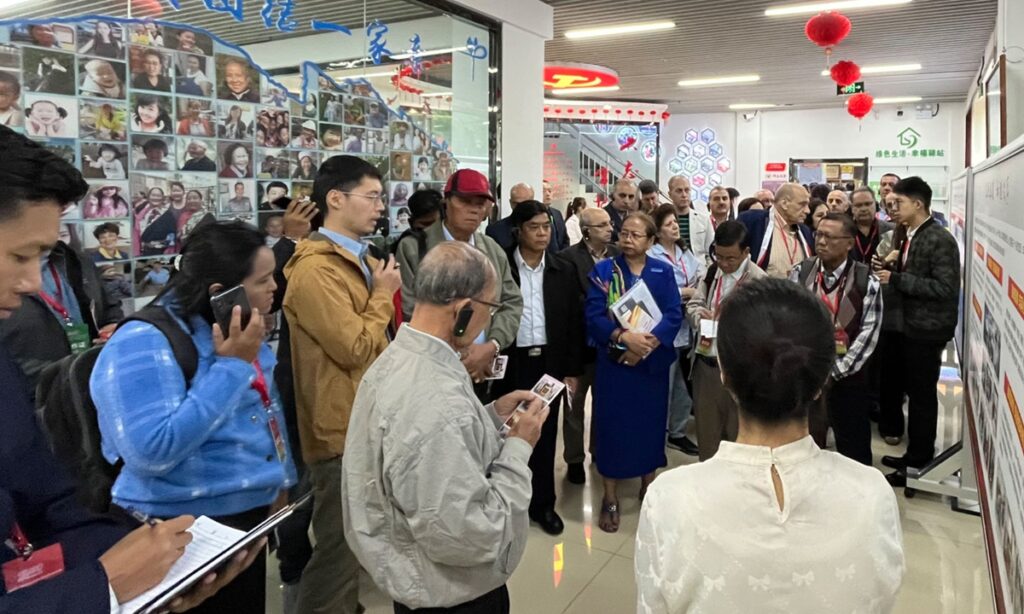Tremendous change in Qinghai with pollution control
Foreign members of a large-scale delegation were impressed by the ecological conservation and high-quality development of the Qinghai-Xizang Plateau during their visit to the high-altitude city of Xining in Northwest China’s Qinghai Province on Tuesday.
“I have myself witnessed tremendous changes inside China as I have visited China multiple times since 1993. The biggest change that has impressed me compared with when I visited China in 2018 is the improvement in the environment after the effective pollution control. Here in Qinghai, people are perfecting the environment by the usage of alternative clean energy,” Rajan Bhattarai, the former foreign affairs adviser to former Nepali prime minister Khadga Prasad Sharma Oli, told the Global Times on Tuesday.
Bhattarai was one of the more than 150 representatives from foreign political parties, media organizations and think tanks in 30 countries covering Europe, Asia, Africa, Oceania and Latin America who were invited to attend an event on Qinghai’s ecological civilization.
The event presented guests the effort that Qinghai has put forth to achieve harmony between humanity and nature. The Qinghai region is located in the core area of the world’s highest and largest plateau and is the source of the Yellow River, Yangtze River, and Lancang River.
Bhattarai, who is also a standing committee member of the Communist Party of Nepal (Unified Marxist-Leninist)and head of the Foreign Affairs Department, said that he handles relations with the CPC and many other parties in other countries.
“I don’t think any other country can compete the way the Chinese leadership is doing,” said Bhattarai, taking examples of China’s poverty alleviation of the largest population within a short period of time, the effective governance system, and the quick mobilization of resources to develop high technology and protect the environment.
As Qinghai not only holds important ecological values and the responsibility to protect the environment, it is also a region which has a high proportion of ethnic minorities, including the Tibetan, Hui, Tu, and Salar ethnic groups.
Christophe Lavernhe, a French professor of physical economy, told the Global Times that he found the integration of different social issues and activities in Qinghai very interesting. He hoped he could get some inspiration as France faced a similar puzzle.
“The economic development, the question of the ethnic groups, the question of ecology, the question of technological progress… They are not separate issues but are integrated and are mixed,” said Lavernhe, who was among the delegation as a founding member of the French party Solidarité et Progrès.
Lavernhe said he’s quite interested with the way the CPC is functioning in terms of Chinese socialism because a huge number of Chinese people getting out of extreme poverty proves that what the Chinese leadership is offering is efficient.
“It’s not something which is exclusively Chinese. I think it is universal,” said Lavernhe.
Lavernhe pointed out the key point is how to conceive the common good and to educate the whole population, especially a population with 56 different ethnic groups. “I’ll try to understand how the Chinese leaders are handling this fact and this could be very interesting for others. In France, we have a big problem with that. We have suburbs with a lot of immigrants,” said Lavernhe.
Besides visiting the Museum of National Resources of Qinghai Province, the Exhibition Center and Ecological Big Data Center of Sanjiangyuan National Park, and the Qinghai Trina Solar company in Xining, the foreign delegation will from Wednesday go to the Haixi Mongolian and Tibetan Autonomous Prefecture, Hainan Tibetan Autonomous Prefecture, and Huangnan Tibetan Autonomous Prefecture, visiting places including the Yangtze River Source village, Qarhan Salt Lake, Kanbula Geopark, GuoMori Castle and Regong Painting Institute.
(Global Times)




